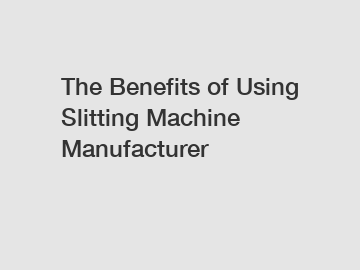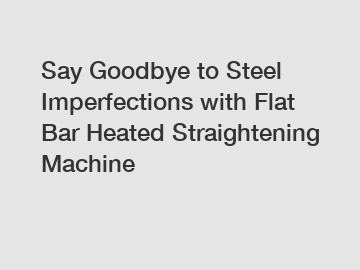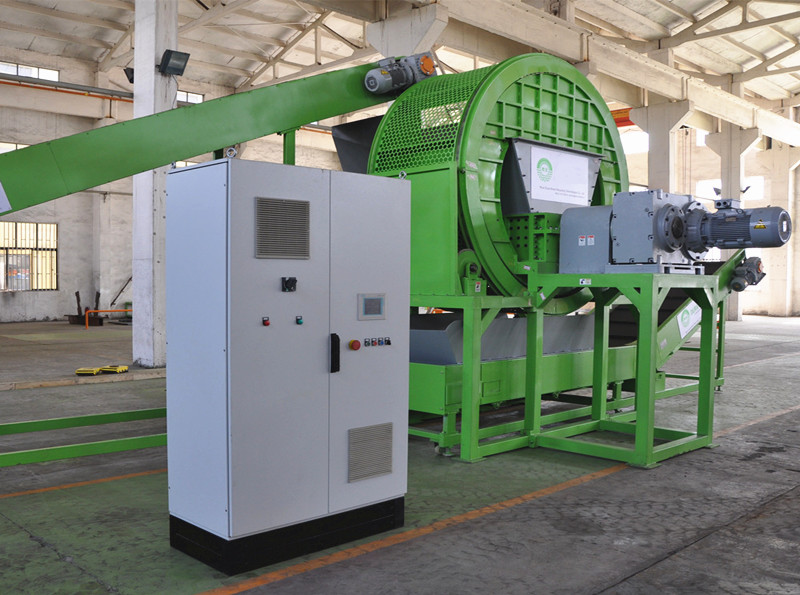When you plan a PCB assembly project, SMD, SMT, and PTH are three terms you can't miss. The following is what this article reveals:
For more Smt Stands for in Electronicsinformation, please contact us. We will provide professional answers.
Part 1: What is SMD
SMD stands for the surface-mounted device. SMDs are electronic components that are picked and placed on PCBs during the SMT assembly, and there are passive SMDs and active SMDs.
Passive SMDs: electronic components that
do not consume or convert electric energy, such as resistors, capacitors, inductors, wave filters, couplers, and antennas. Passive SMDs
do not change the signal features but only let them pass. And they work only if there comes signal input, with no need for an external power supply.
Active SMDs: electronic components that
consume and convert electric energy, such as ICs, transistors, silicon-controlled rectifiers, diodes, triodes, and valves. Active SMDs generate signals in analog and digital circuits and can
change signal features. And they work with signal input and external power supply.
SMDs have very short pins, and their sizes are about only 1/10 of the through-hole components. Packaging sizes of SMDs include 01005, 0201, 0402, 0603, 0805, 1206, 1210, 1812, 2225.
SMD vs SMT
SMT is a PCB assembly technology, while SMDs are PCB parts mounted via SMT technology.
Please see details about SMT below.
Part 2: What is SMT
SMT stands for surface-mounted technology. SMT is the main technology for PCB assembly, and it is automatic. SMT assembly can meet
fine-pitch requirements, while the other technology PTH can't be fine-pitch.
Currently, almost all electronic components can be surface mounted, especially for high-dense circuits. As electronic products are smaller and smaller, SMT is the trend of PCB assembly.
The steps of SMT assembly are:
Step 1. PCB manufacturing and SMT stencil manufacturing
Step 2. Solder paste printing on PCB pads via SMT stencils
Step 3. Solder paste inspection to check solder paste thickness and shapes
Step 4. High-speed SMT assembly (high-speed SMT machine picks and places SMDs of 0805 and below)
Step 5. Function SMT assembly (functional SMT machine picks and places SMDs of 0805 and above)
Step 6. (optional) X-ray test if there are BGAs (ball grid array, a surface-mounted packaging) on the PCBA
Step 7. Reflow soldering to melt and cure solder paste
Step 8. AOI test (automatic optical inspection) to make sure the SMDs are soldered correctly on the surface
For batch PCB assembly, the PCBA manufacturer PCBONLINE picks one of the first five PCB assembly pieces to go through the first article inspection (FAI). Then an FAI report is generated and sent to customers for review. Only when customers approve it, the batch PCB assembly start.
Are SMT assembly steps the same in all PCB assembly factories?
Yes.
Then why do we bother to compare different PCB assembly service providers at SMT manufacturing levels?
Because they have different SMT assembly capacities.
And the comparison in SMT manufacturing is necessary.
The main considerations for choosing SMT assembly companies are below:
- Lead-free assembly capability of reflow soldering ovens
RoHS standards require the PCB assembly to be lead-free. The lead-free reflow soldering temperature range is
240°C - 270°C, while the tin-lead reflow soldering temperature range is
210°C to 245°C.
- Fine pitch assembly
Pitch is the center-to-center distance between adjacent PCB pads, balls, or IC pins. Before you place your order, you need to ask the PCB assembly company for the smallest fine-pitch it can deal with.
- PCBA tests and conformal coating
You never want to spend extra time looking for test companies before your products enter the market. That's why you'd better work with a one-stop assembly company that completes all tests for your products.
And if you want the circuit boards to have a longer life span, find a PCB assembly company that can apply the conformal coating.
One-Stop Lead-Free Fine-Pitch SMT Assembly Services Provider | PCBONLINE
PCBONLINE is a leading one-stop PCB assembly services provider with customers around the world. It has competitiveness in contract electronic manufacturing for these advantages:
- 0.35mm fine-pitch SMT assembly capability with 01005 smallest SMD packaging
- Lead-free PCB assembly and the whole electronic manufacturing process RoHS certified
- PCB assembly following IPC-A-610 Class 2/3standards
- Complete PCBA tests such as thermal aging, functional testing, four-terminal sensing
- IC programming, conformal coating, and end-product assembly are available
- Fair PCB assembly prices. The more quantity, the lower PCBA per price
Please feel free to get a quote for your PCBA project online or by email at info@pcbonline.com. It is fast and free.
Part 3. What is PTH
PTH stands for
through-hole assembly. PTH is a PCB assembly technology used less than SMT, done by component pins plug-in pre-set holes.
Through-hole PCB assembly has stronger mechanical stability than SMT soldering, but it can't meet the fine-pitch requirements.
PTH components are usually for plug needs, such as USB, type-C, and connectors. Capacitors of large capacitance can't be surface mounted, and they are usually also PTH components.
The PTH components area on the circuit board is much larger than SMDs'. Through-hole components have long pins so that they can plug into the pre-drilled holes on the PCB.
Here is the PTH assembly process:
Step 1. Let through-hole component pins through-hole manually
Step 2. Wave soldering to let tin fill the gaps between PTH component pins and through-hole walls
Step 3. Trim PTH component pins to be within 2mm
Step 4. Clean the extra flux on the PCBA surface
Step 5. (optional) IC programming, functional testing, thermal aging, end-product assembly
Part 4: SMT vs PTH, SMD vs PTH Components
In PCB assembly factories, both SMT lines and PTH lines are necessary. We can't say which is better because SMT and PTH serve different purposes. But you can see the differences between SMT and PTH from the comparison table.
SMT
THT or PTH
Necessity for PCB assembly
Necessary
Unnecessary if PCB has no plug needs
Method
Automatic
Usually manual
Complexity
Advanced
Simple
Density
High
Low
Soldering
Reflow soldering
Wave soldering
Speed
Fast
Slower than SMT
Precedence
Before PTH
After SMT
Through holes
No
Yes
Applications
Batch PCB assembly, high-density products
Prototype assembly, simple circuit boards
SMDs and through-hole components are only different in size and packaging.
PCB Components
SMDs
PTH components
Area on PCB
Small
Large
Weight
Light
Heavier than SMDs
Pins
Very short
Long
Fine-pitch
Can be fine-pitch
No
Prices
Normal
Lower than SMDs
Typical devices
Resistors, capacitors, inductors, ICs
Components for plug needs such as USB
At the one-stop PCB assembly factory of PCBONLINE, both SMT assembly and PTH assembly are available. If you order PCB assembly services from us, we can complete PCBA the next day (IPC-A-610 Class 2/3 standards) (at the fastest). The shipping usually takes 2 to 3 days.
Conclusion
This article gives an introduction to SMD, SMT, and PTH one by one, and it reveals the differences between SMT, SMD, and PTH components.
We can conclude that SMT is the mainstream PCB assembly technology, and PTH is mainly used when there are plug needs. SMDs and PTH components are mainly different in size and packaging. If you are looking for PCB assembly services, do not miss the 22-year-old turnkey PCBA source factory PCBONLINE.
SMT is Surface Mounted Technology (abbreviation of Surface Mounted Technology), is currently the most popular technology and process in the electronic assembly industry.
What are the characteristics of SMT.
High assembly density, small size and light weight of electronic products, the volume and weight of SMD components is only about 1/10 of traditional cartridge assembly, generally after the use of SMT, electronic products volume reduction of 40% to 60%, weight reduction of 60% to 80%.
High reliability and high vibration resistance. Low defect rate of solder joints.
Good high frequency characteristics. Reduced electromagnetic and RF interference.
Easy to automate and improve production efficiency. Reduce cost up to 30%~50%. Save material, energy, equipment, manpower, time, etc.
Why use SMT?
The pursuit of miniaturization of electronic products, the former use of perforated plug-in components have been unable to reduce .
Electronic products more complete, the use of integrated circuits (IC) has no perforated components, especially large-scale, highly integrated IC, have to use surface mount components.
Product batching, production automation, the factory to low cost and high yield, production of quality products to meet customer demand and strengthen market competitiveness.
The development of electronic components, the development of integrated circuits (ICs), the diversified application of semiconductor materials.
The electronic technology revolution is inevitable, chasing the international trend.
SMT basic process components.
Screen printing (or dispensing) --> mounting --> (curing) --> reflow soldering --> cleaning --> inspection --> rework
Silk-screen printing: its role is the solder paste or patch adhesive leakage printed on the pads of the PCB, in preparation for the welding of components. The equipment used is the screen printing machine (screen printer), located at the front of the SMT production line.
Dispensing: It is to drop glue onto the fixed position of the PCB, and its main function is to fix the components to the PCB board. The equipment used is the dispensing machine, located at the front of the SMT production line or behind the testing equipment.
Mounting: Its role is to accurately install the surface assembly components to the fixed position of the PCB. The equipment used is the mounting machine, located behind the screen printing machine in the SMT production line.
Curing: Its role is to melt the SMD adhesive, so that the surface assembly components and PCB board firmly bonded together. The equipment used is the curing oven, located in the SMT production line behind the bonder.
Reflow soldering: its role is to melt the solder paste, so that the surface assembly components and PCB board firmly bonded together. The equipment used is reflow oven, located in the SMT production line behind the bonder.
Cleaning: its role is to assemble the PCB board above the harmful welding residues such as flux removed. The equipment used is the cleaning machine, the location can not be fixed, can be online, or not online.
Testing: The role of the assembled PCB board is to test the quality of welding and assembly quality. The equipment used are magnifying glass, microscope, in-line tester (ICT), flying probe tester, automatic optical inspection (AOI), X-RAY inspection system, function tester, etc. Location according to the needs of the inspection, can be configured in the production line appropriate place.
Rework: Its role is to detect the failure of the PCB board for rework. The tools used are soldering iron, reworking workstation, etc. Configured in any position in the production line.
SMT Common Knowledge Introduction
1 Generally speaking, the temperature of SMT workshop is 25±3℃.
2. Solder paste printing, the materials and tools needed to prepare the paste, steel plate, scraper, wipe paper, dust-free paper, cleaning agent, stirring knife.
3. generally used alloy composition of the paste is Sn / Pb alloy, and the alloy ratio of 63/37. 4.
4. The main components of the solder paste is divided into two major components of tin powder and flux. 5.
5 flux in the soldering of the main role is to remove the oxide, destroy the surface tension of molten tin, to prevent re-oxidation. 6.
6. The volume ratio of tin powder particles to Flux (flux) in the solder paste is about 1:1, and the weight ratio is about 9:1.
7. The principle of taking solder paste is first in first out. 8.
8. when the paste is opened and used, it must go through two important processes: tempering and stirring.
9. The common production methods of steel plate are: etching, laser, electroforming.
10. The full name of SMT is Surface mount (or mounting) technology, the Chinese meaning is surface adhesion (or mounting) technology. 11.
11. the full name of ESD is Electro-static discharge, the Chinese meaning is electrostatic discharge.
12. When making SMT equipment program, the program includes five major parts, this five parts are CB data; Mark data; Feeder data; Nozzle data; Part data.
13 lead-free solder Sn/Ag/Cu 96.5/3.0/0.5 melting point of 217C.
14. The controlled relative temperature and humidity of the parts drying oven is < 10%.
15. commonly used passive components (Passive Devices) are: resistance, capacitance, point sense (or diode), etc.; active components (Active Devices) are: transistors, IC, etc.
16. The material of the commonly used SMT steel plate is stainless steel.
17. The thickness of the commonly used SMT steel plate is 0.15mm (or 0.12mm).
18. The types of electrostatic charge generated by friction, separation, induction, electrostatic conduction, etc.; electrostatic charge on the electronics industry for: ESD failure, electrostatic pollution; electrostatic elimination of the three principles of electrostatic neutralization, grounding, shielding.
19. inch size LxW 0603=0.06inch*0.03inch, metric size LxW 3216=3.2mm*1.6mm.
20. drain resistance ERB-05604-J81 code 8 "4" means 4 circuits, resistance value of 56 ohms. Capacitor ECA-0105Y-M31 capacitance C = 106PF = 1NF = 1X10-6F. 21.
21. ECN Chinese full name: engineering change notice; SWR Chinese full name: special requirements work order, must be countersigned by the relevant departments, the file center distribution, in order to be valid.
22. 5S specific content for the organization, tidying, cleaning, cleaning, quality.
23. The purpose of PCB vacuum packaging is to prevent dust and moisture. 24.
24. The quality policy is: comprehensive quality control, implementation of the system, to provide the quality of customer needs; full participation, timely handling, to achieve the goal of zero defects.
25. Quality three no policy is: not to accept defective products, not to manufacture defective products, not to flow out defective products.
26. the QC seven techniques in the fishbone to check the cause of the 4M1H are (Chinese): people, machines, materials, methods, environment.
27. The composition of the solder paste contains: metal powder, solvents, fluxes, anti-drop agent, active agent; by weight, the metal powder accounts for 85-92%, by volume, the metal powder accounts for 50%; where the metal powder is mainly composed of tin and lead, the ratio of 63/37, the melting point of 183 ℃.
28. Solder paste must be taken out of the refrigerator to return to temperature, the purpose is: to let the temperature of the refrigerated solder paste back to room temperature, in order to facilitate printing. If it is not warmed up, it will be easy to produce bad solder beads in PCBA after Reflow.
29. the machine file supply mode are: ready mode, priority exchange mode, exchange mode and quick connect mode.
30. SMT PCB positioning methods are: vacuum positioning, mechanical hole positioning, bilateral clamping positioning and board edge positioning.
Contact us to discuss your requirements of Pcb Smt Machine. Our experienced sales team can help you identify the options that best suit your needs.
Additional resources:The World's Biggest Auto Shredder Eats 450 Cars an Hour
Unlocking the Secrets to a Successful Wheat Milling Equipment Turnkey ProjectHow Does How to Unclog a Kitchen Sink Work?Revolutionary Copper Pipe Straightening Tool: A Game-Changer?How to Choose the Best 300TPD Flour Milling Machine for Your Business?10 Questions You Should Know about U Groove Guide Rollers4 Tips to Choose a How to Straighten Cable
31. The resistor with a silkscreen (symbol) of 272 has a resistance of 2700Ω and the resistor with a resistance of 4.8MΩ has a symbol (silkscreen) of 485.
32. The silkscreen on the BGA body contains information such as manufacturer, manufacturer's part number, specification, and Datecode/(Lot No).
33. The pitch of 208pin QFP is 0.5mm.
34. the seven QC practices, the fishbone diagram emphasizes the search for cause-and-effect relationships;
35. CPK refers to the current process capability under actual conditions;
36. Flux starts to evaporate in the constant temperature zone for chemical cleaning action;
37. the ideal cooling zone curve and reflow zone curve mirror relationship;
38. Sn62Pb36Ag2 solder paste is mainly used for ceramic boards;
39. rosin-based fluxes can be divided into four types: R, RA, RSA, RMA;
40. RSS curve for temperature rise → constant temperature → reflow → cooling curve;
41. we are now using the PCB material is FR-4;
42. the PCB warpage specification does not exceed 0.7% of its diagonal;
43. STENCIL production laser cutting is a method that can be reworked;
44. the BGA ball diameter commonly used on computer motherboards is 0.76mm;
45. ABS system is absolute coordinate;
46. the error of ceramic chip capacitor ECA-0105Y-K31 is ±10%;
47. the PCB of the computer currently used, its material is: glass fiber board;
48. SMT parts packaging its tape tray diameter of 13 inches, 7 inches;
49. SMT general steel plate openings than the PCB PAD 4um smaller to prevent the phenomenon of poor tin ball;
50. according to the "PCBA inspection specification" when the two-sided angle > 90 degrees means that the solder paste and wave solder body no adhesion;
51. IC unpacking humidity display card humidity in the case of more than 30% means that the IC moisture and moisture absorption;
52. The correct weight ratio and volume ratio of solder powder to flux in the composition of solder paste is 90%:10%, 50%:50%;
53. Early surface mount technology originated in the mid-1960s in military and aerospace electronics;
54. the most commonly used SMT solder paste Sn and Pb content is: 63Sn+37Pb;
55. the common bandwidth of 8 mm paper tape reel feed pitch is 4 mm. 56;
56. In the early 1970s, a new type of SMD emerged in the industry, the "sealed chip carrier", often referred to as HCC;
57. the symbol 272 component resistance value should be 2.7K ohm;
58. The capacitance of 100NF components is the same as 0.10uf. 59;
59. The eutectic point of 63Sn+37Pb is 183°C. 60;
60. The most used material for electronic parts in SMT is ceramic;
61. soldering furnace temperature curve its curve the highest temperature 215C is most appropriate;
62. tin furnace inspection, the temperature of the tin furnace 245 ℃ is more appropriate;
63. the steel plate opening type square, triangle, round, star, Ben Lei shape;
64. SMT section of the row of resistance there is no directional no. 65;
65. the current market sold solder paste, the actual only 4 hours of adhesion time;
66. SMT equipment generally use the rated air pressure of 5KG/cm2;
67. SMT parts maintenance tools are: soldering iron, hot air extractor, suction tin gun, tweezers;
68. QC is divided into: IQC, IPQC, FQC, OQC;
69 high-speed placement machine can be mounted resistors, capacitors, IC, transistors;
70. the characteristics of static electricity: small current, affected by humidity;
71. front PTH, reverse SMT over the tin furnace when using what kind of welding method disturbance double wave soldering;
72. SMT common inspection methods: visual inspection, X-ray inspection, machine vision inspection
73. chromium iron repair parts heat transfer method is conduction + convection;
74. the current BGA material of the main tin ball into Sn90 Pb10;
75. the production method of steel plate laser cutting, electroforming method, chemical etching;
76. the temperature of the furnace according to: using the thermometer to measure the applicable temperature;
77. the SMT semi-finished products are exported in the soldering condition when the parts are fixed on the PCB;
78. the development of modern quality management history TQC-TQA-TQM;
79. ICT test is a needle bed test. 80;
80. the ICT test can test electronic parts using static test. 81;
81. solder characteristics are lower melting point than other metals, physical properties to meet the welding conditions, low temperature fluidity than other metals;
82. the very soldering furnace parts change process conditions to change to re-measure the measurement curve;
83. Siemens 80F / S belongs to the more electronic control drive;
84. solder paste thickness meter is the use of Laser light measurement: solder paste degree, solder paste thickness, solder paste printed out of the width;
85. SMT parts feeding methods are vibration feeder, tray feeder, tape feeder;
86. SMT equipment using which mechanism: cam mechanism, side bar mechanism, screw mechanism, sliding mechanism;
87. if the visual inspection section can not be confirmed, what should be done according to the BOM, manufacturer's confirmation, sample board;
88. If the part packing method is 12w8P, the counter Pinth size should be adjusted by 8mm each time;
89. types of welding machine: hot air type welding furnace, nitrogen type welding furnace, laser type welding furnace, infrared type welding furnace;
90. SMT parts sample trial can use the method: flow line production, hand printing machine mount, hand printing hand mount;
91. commonly used MARK shape are: round, "ten", square, diamond, triangle, million characters;
92. SMT section due to improper setting of Reflow Profile, may cause parts micro-crack is the preheating area, cooling area;
93. Uneven heating of the two ends of the SMT section is likely to cause: empty solder, offset, and tombstone;
94. The Cycle time of high-speed machine and general-purpose machine should be balanced as much as possible;
95. The true meaning of quality is to do it right the first time;
96. SMT machine should first paste small parts, then paste large parts;
97. BIOS is a basic input/output system, the full English is: Base Input/Output System;
98. SMT parts are divided into LEAD and LEADLESS according to the part foot;
99. There are three basic types of common automatic placement machine, successive placement type, continuous placement type and mass transfer type placement machine;
100. SMT process can be produced without LOADER;
101. The SMT process is board feeding system - solder paste printing machine - high speed machine - general purpose machine - large flow soldering - board closing machine;
102. When the temperature and humidity sensitive parts are opened, the parts can be used only when the color shown in the circle of humidity card is blue;
103. The size of 20mm is not the width of the material belt;
104. short circuit caused by bad printing in the process: a. insufficient metal content of solder paste, resulting in collapse b. excessive tin amount due to excessive hole in the steel plate c. poor quality of the steel plate, poor under the tin, change the laser cutting model d. the back of the Stencil residual solder paste, reduce the scraper pressure, use the appropriate VACCUM and SOLVENT
105. General back to the soldering furnace Profile the main purpose of the project in each zone: a. Pre-heating zone; project purpose: volatilization of flux in the paste. b. Equalization zone; project purpose: flux activation, removal of oxides; evaporation of excess water. c. Back to the soldering zone; project purpose: melting of solder. d. Cooling zone; project purpose: the formation of alloy solder joints, parts feet and pads connected as one;
106. SMT process, the main reasons for the generation of tin beads: PCB PAD poor design, poor design of steel plate openings, placement depth or placement pressure is too large, Profile curve rise slope is too large, paste collapse, paste viscosity is too low.
What is SMD?
It is the abbreviation of Surface Mounted Devices, meaning: Surface Mounted Devices, which is one kind of SMT (Surface Mount Technology ) components.
"In the initial stage of electronic circuit board production, over-hole assembly was done entirely by hand. After the first automated machines were introduced, they could place some simple pin assemblies, but complex assemblies still needed to be placed by hand before wave soldering could take place. Surface mount assemblies were introduced some twenty years ago and thus ushered in a new era. From passive components to active components and integrated circuits, they eventually became surface mount devices (SMDs) and could be assembled with pick-and-place equipment. For a long time it was thought that all pin assemblies could eventually be packaged in SMD packages. In addition to SMD, there are also SMC Surface Mounted components (SMC).
The main types are rectangular chip assemblies, cylindrical chip assemblies, composite chip assemblies, and shaped chip assemblies.
SMD Components
There are mainly chip transistors and integrated circuits
Integrated circuits also include SOP, SOJ, PLCC, LCCC, QFP, BGA, CSP, FC, MCM, etc.
Examples are as follows.
1, a connector (Interconnect): to provide mechanical and electrical connection / disconnection, consisting of connection plugs and sockets, the cable, bracket, chassis or other PCB and PCB connected; but the actual connection with the board must be through the surface mount type contact.
2, a active electronic components (Active): in the analog or digital circuit, can control the voltage and current by itself to produce gain or switching effect, that is, there is a response to the applied signal, can change their basic characteristics.
b Passive electronic components (Inactive): When the application of electrical signals do not change their own characteristics, that is, to provide a simple, repeatable response.
3、Odd-form electronic component(Odd-form): Its geometry factor is peculiar, but need not be unique. Therefore it must be placed by hand, and its housing (in contrast to its basic function) shape is non-standard for example: many transformers, hybrid circuit structures, fans, mechanical switch blocks, etc.
Specification of various SMT components
Chip resistors, capacitors, etc.: Size specifications: 0201, 0402, 0603, 0805, 1206, 1210, 2010, etc.
Tantalum capacitors: Size specification: TANA, TANB, TANC, TANDSOT
Transistors: SOT23, SOT143, SOT89, etc.
melf cylindrical components: Diodes, Resistors, etc.
SOIC IC: Size specification: SOIC08, 14, 16, 18, 20, 24, 28, 32
QFP Close Pitch ICs PLCC ICs: PLCC20, 28, 32, 44, 52, 68, 84
BGA Ball Grid Array Packaged ICs: Array Pitch Specifications: 1.27, 1.00, 0.80
CSP ICs: microBGAs with component side lengths up to 1.2 times the side length of the chip inside and array spacing <0.50
There are many methods to evaluate the statistical average diameter of nozzle spray fog particles, usually arithmetic statistical average diameter, geometric statistical average diameter, but the most commonly used is the Sotter average, or SMD for short.
The principle is to approximate all fog particles by a sphere of uniform diameter with the same surface area and volume, and the resulting sphere diameter is the Sotter average diameter.
Since this statistical averaging reflects the physical properties of the subject well, it is most widely used in practice.
Want more information on Wholesale Smt Conveyor? Feel free to contact us.












Comments
All Comments ( 0 )